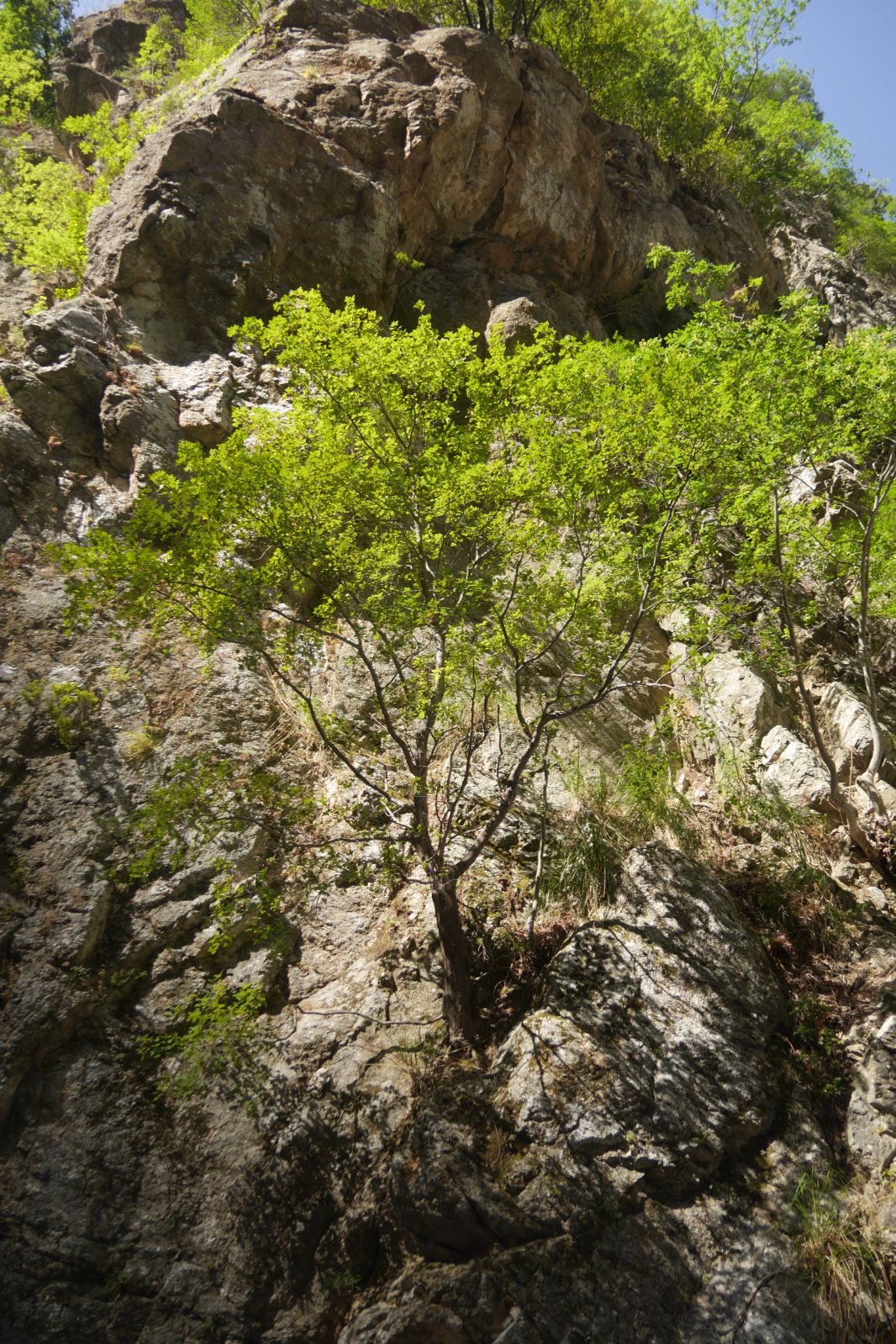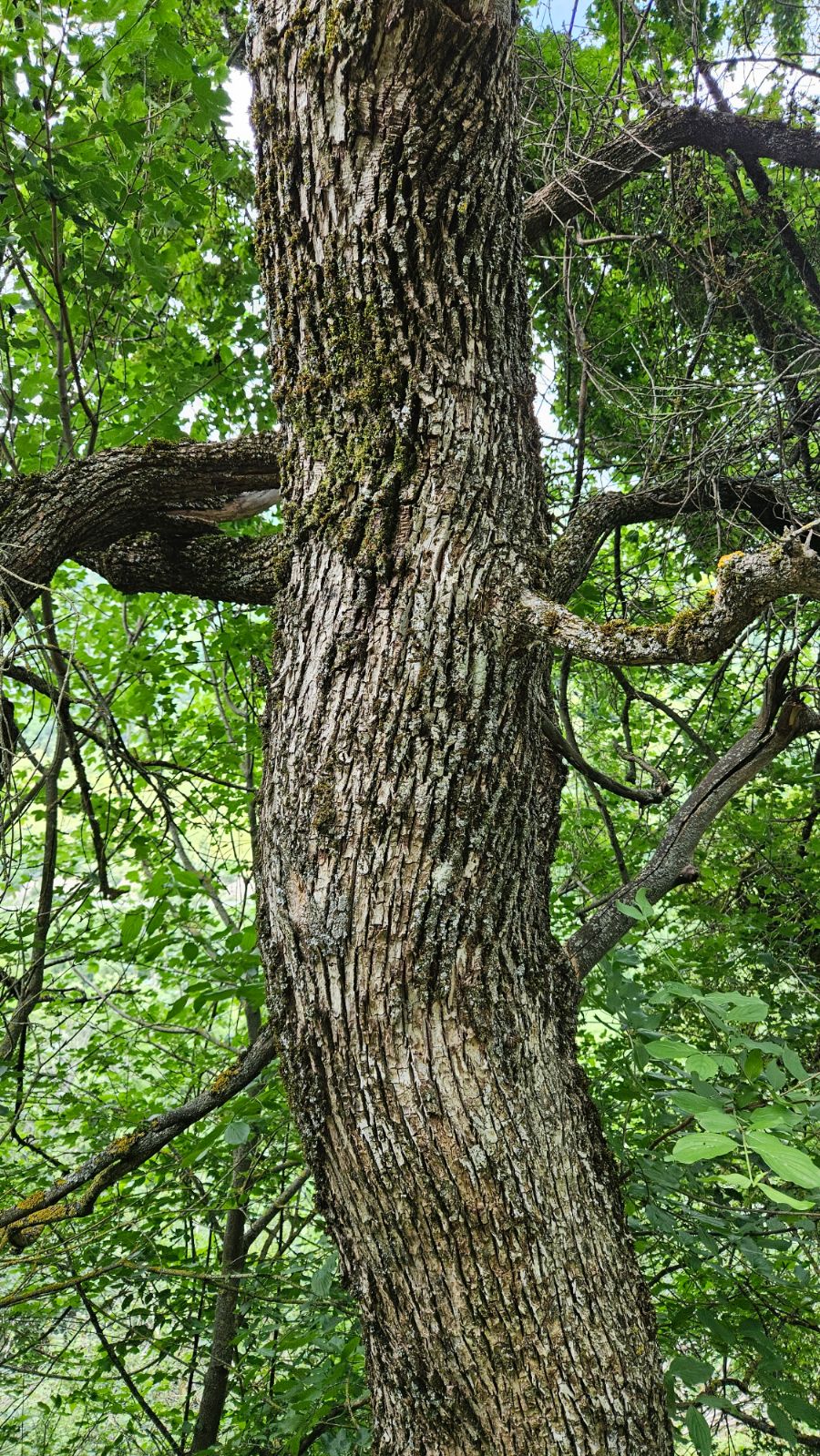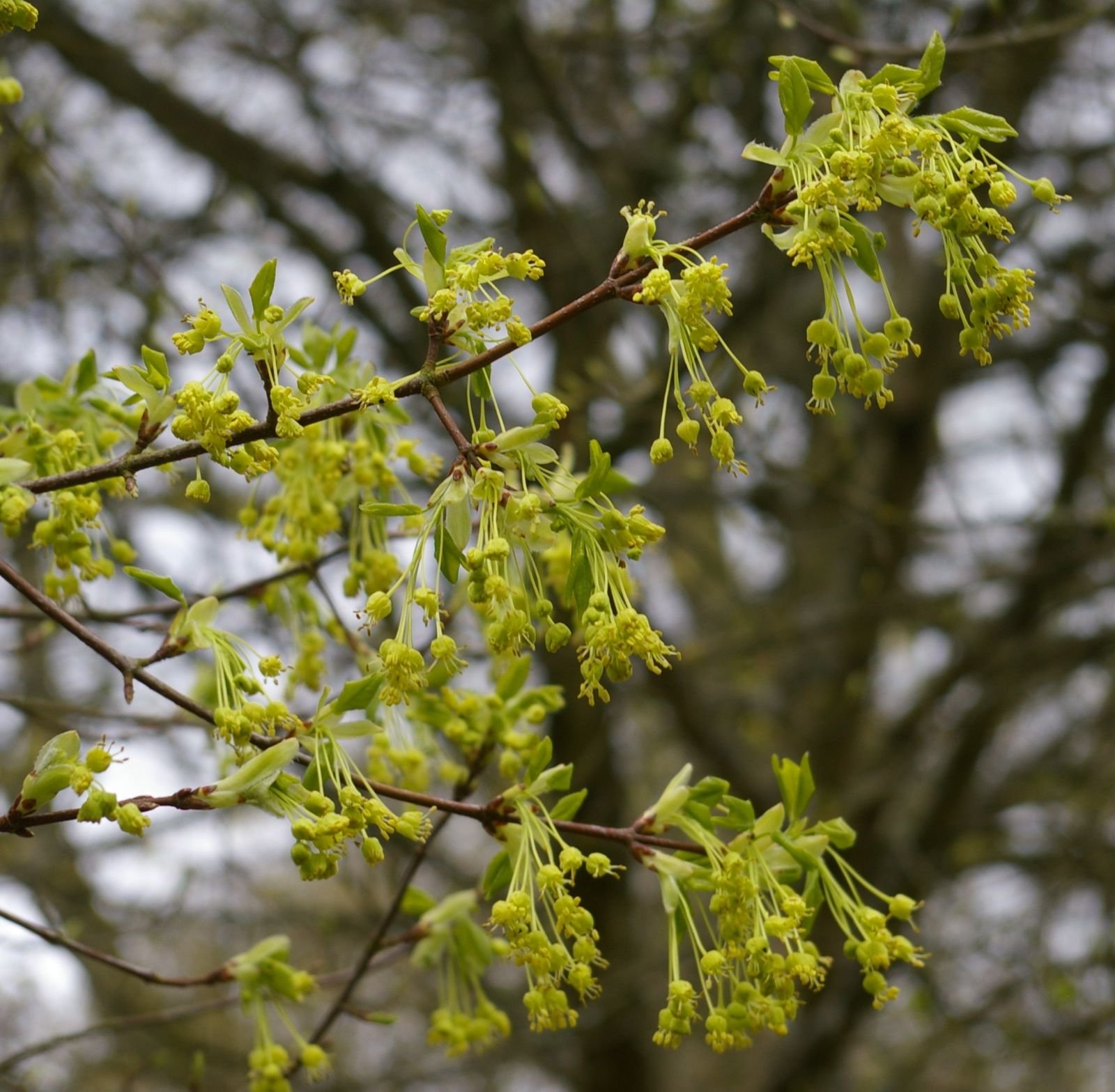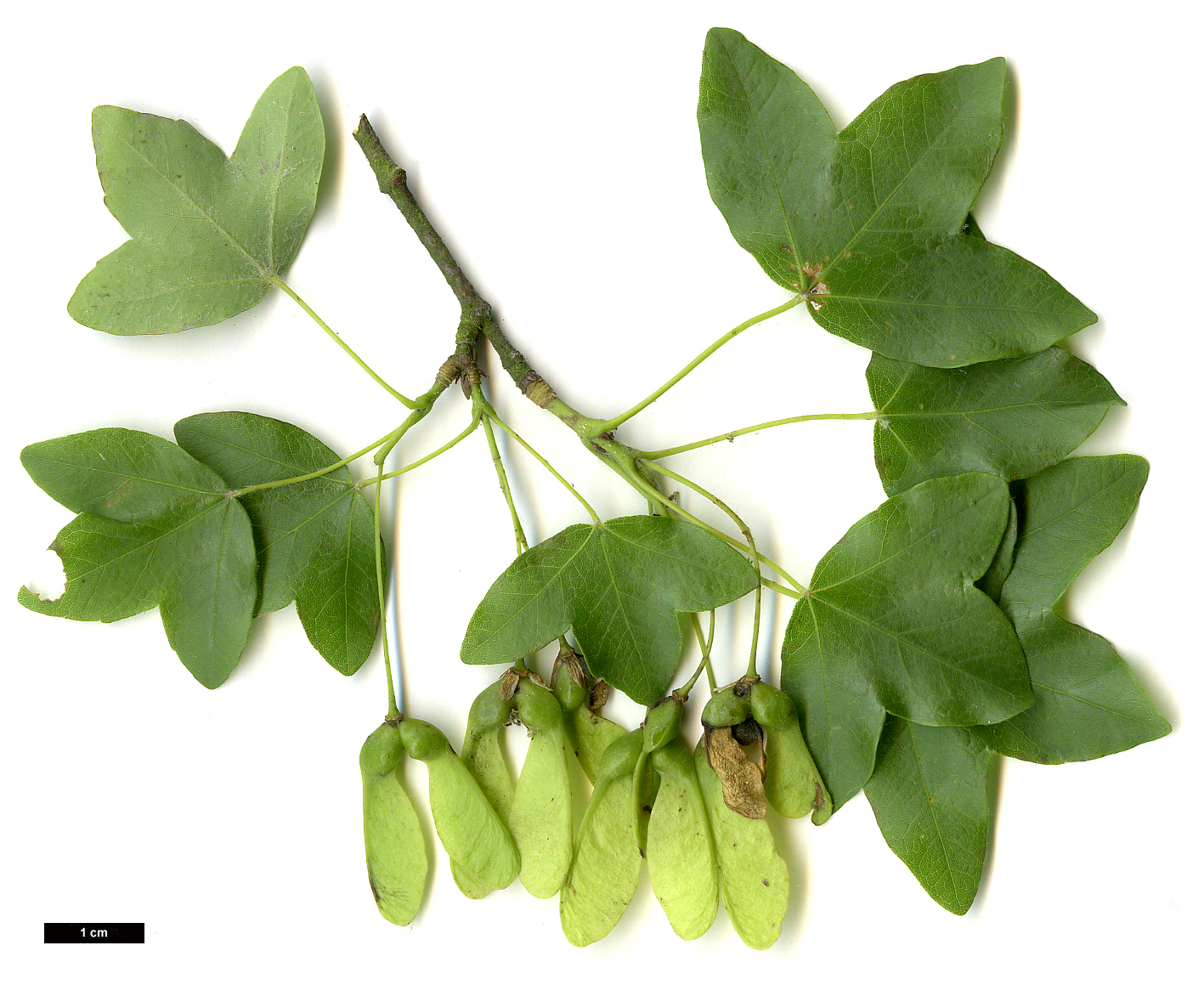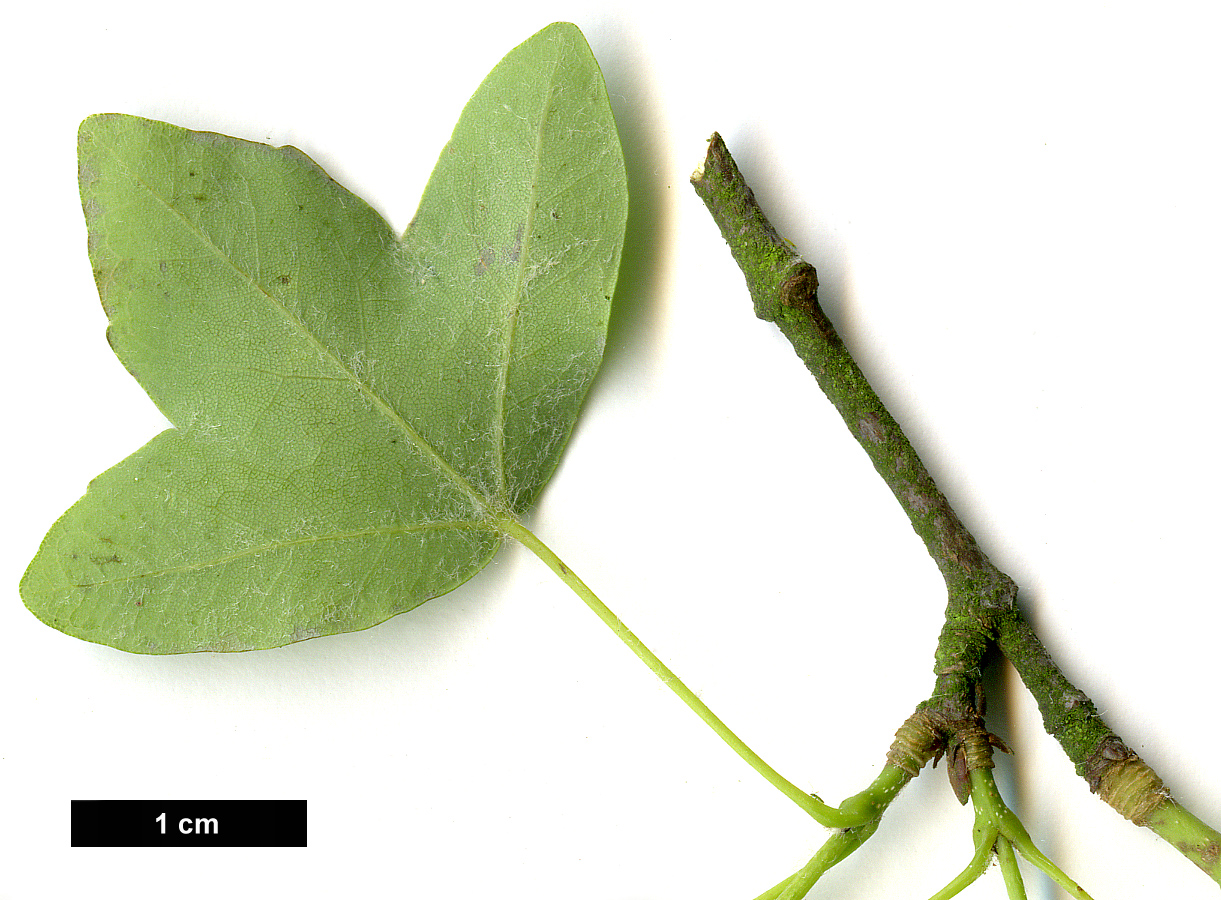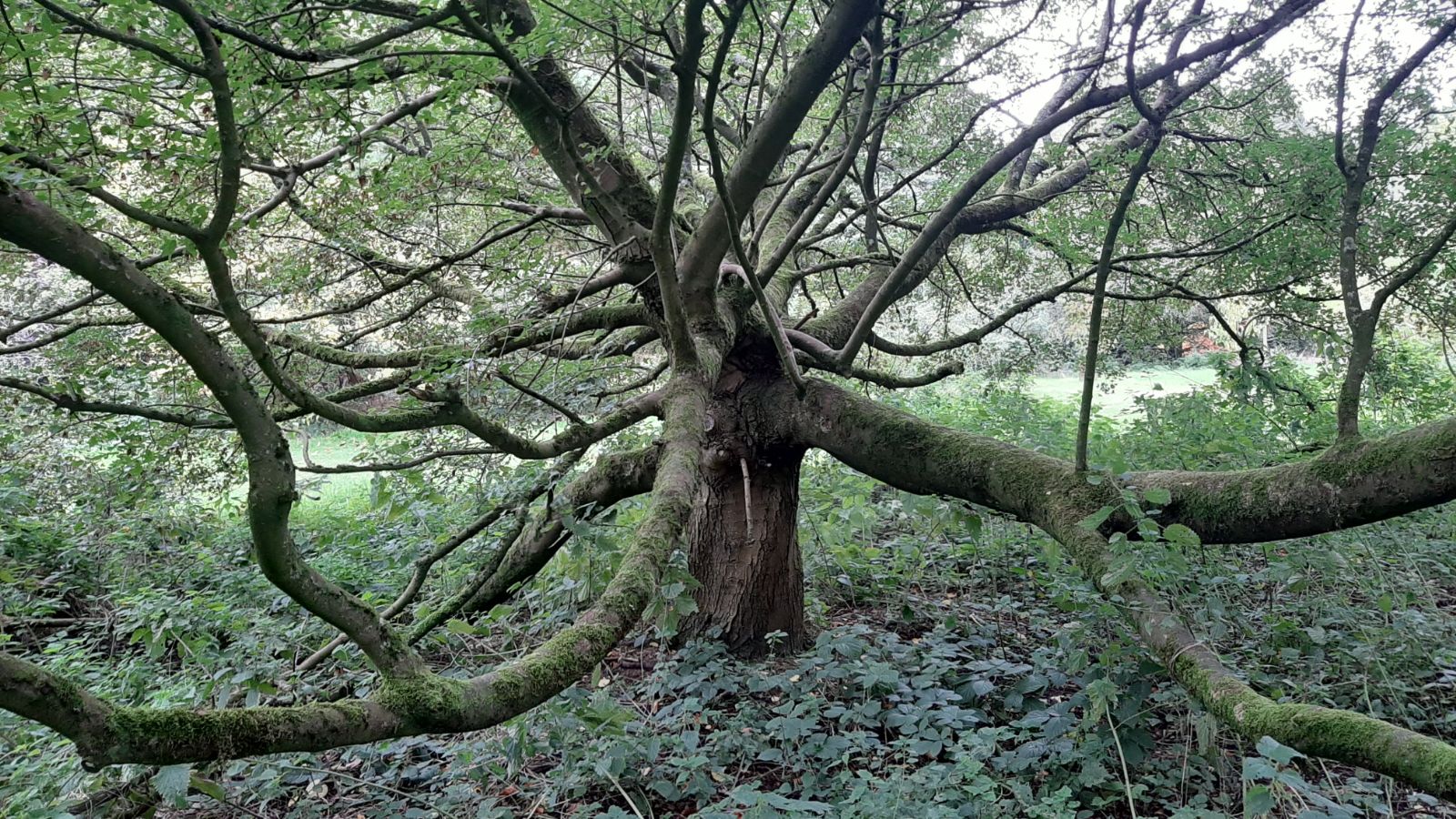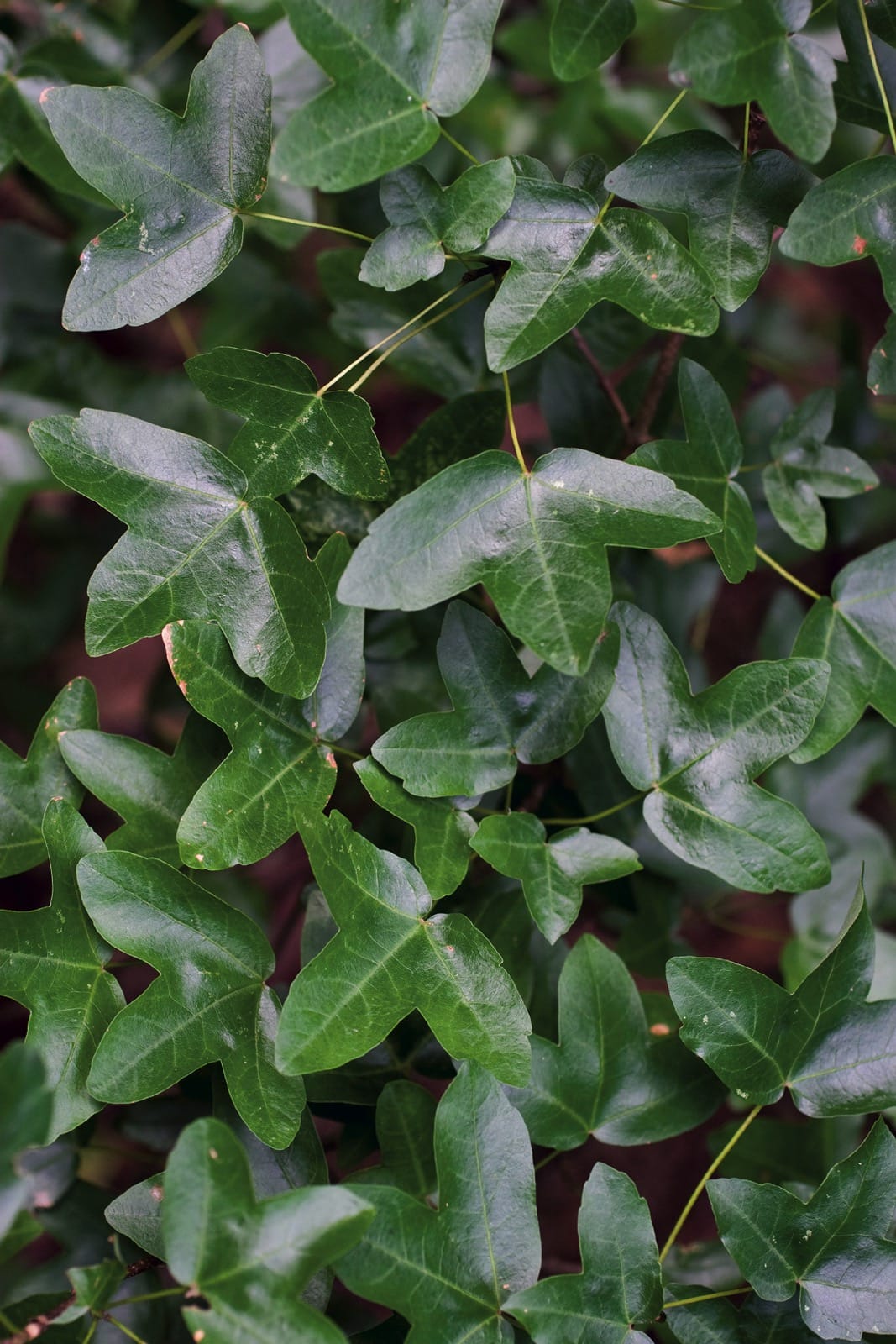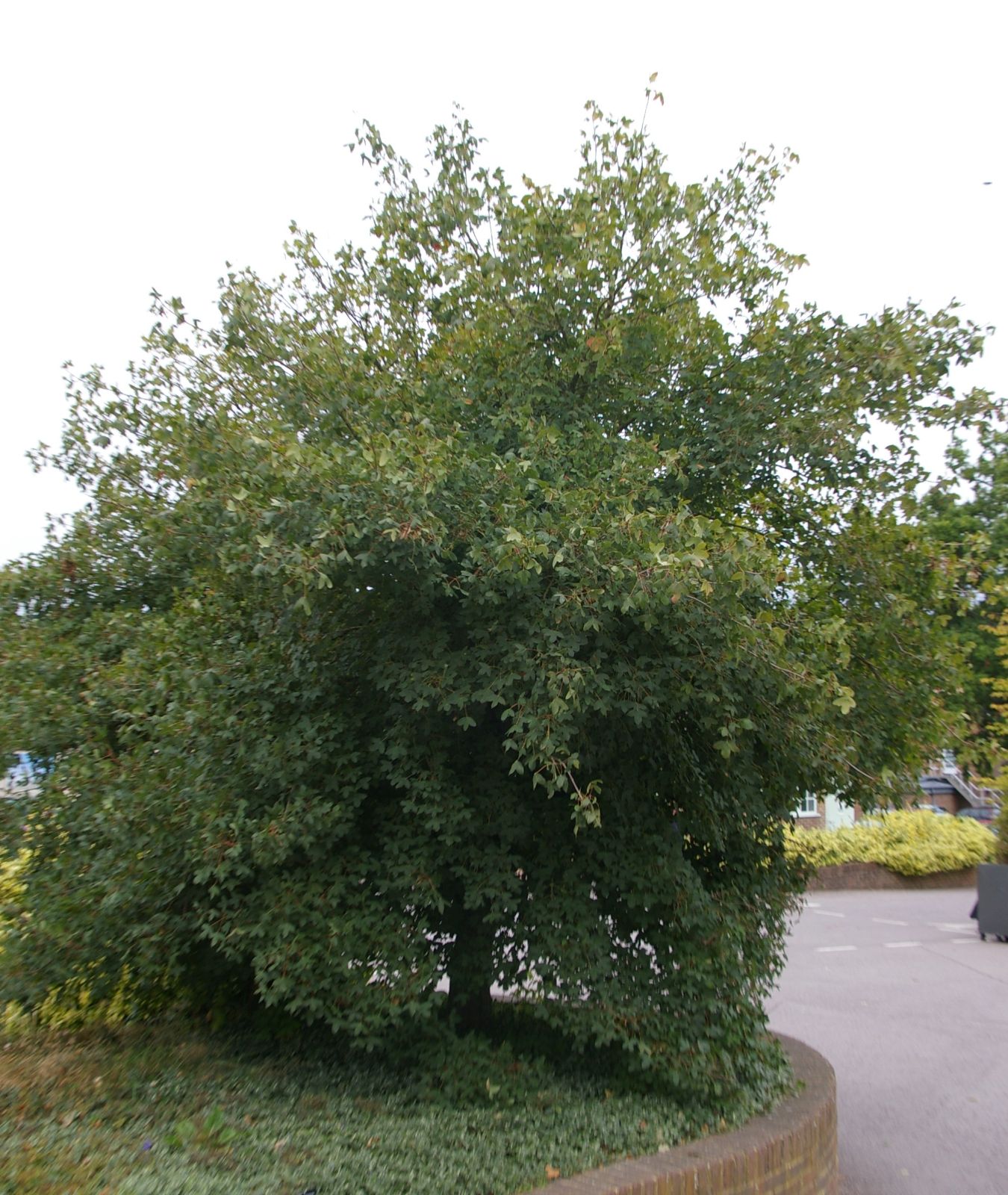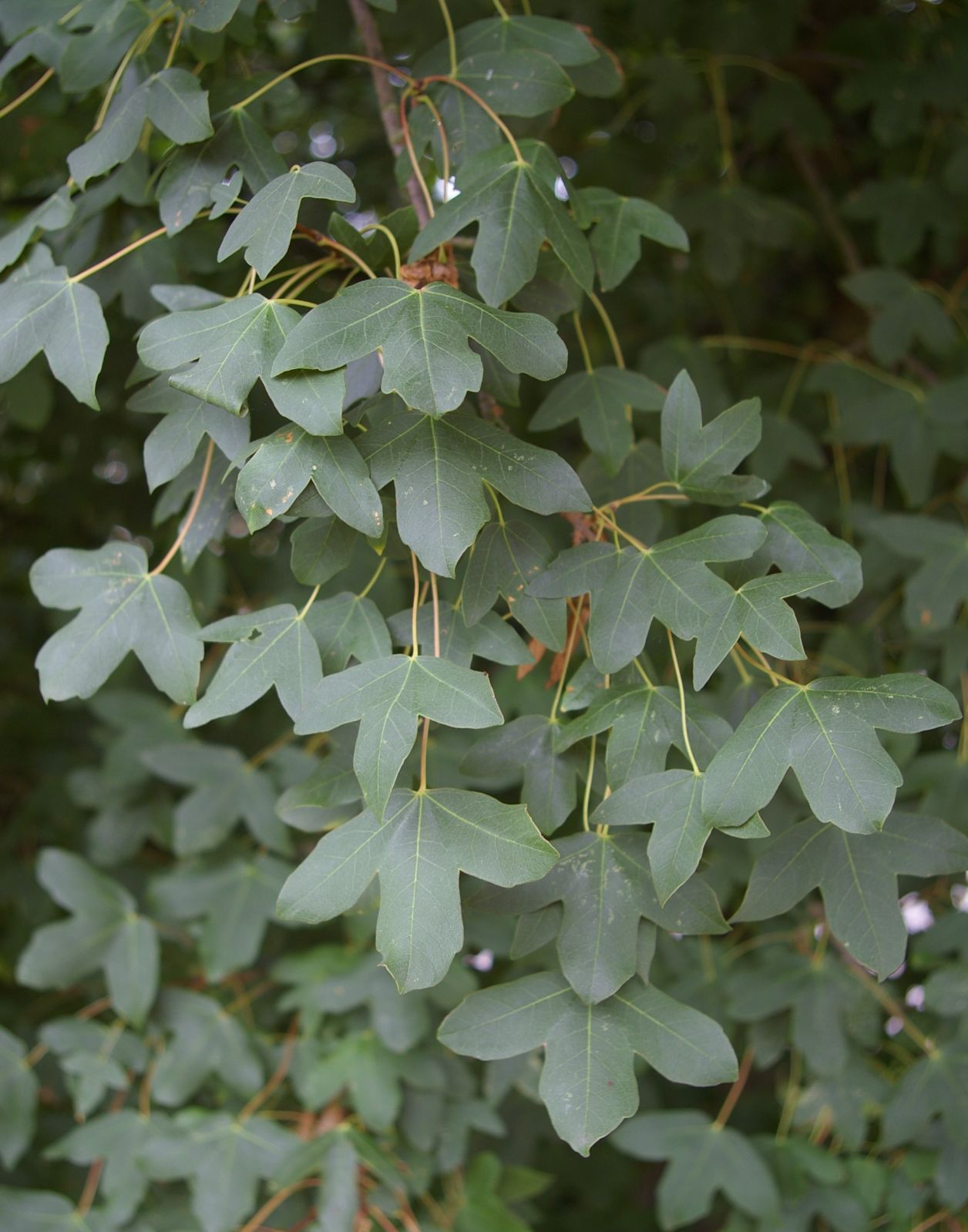Acer monspessulanum
Sponsor
Kindly sponsored by
The Wynkcoombe Arboretum
Credits
Dan Crowley (2020)
Recommended citation
Crowley, D. (2020), 'Acer monspessulanum' from the website Trees and Shrubs Online (treesandshrubsonline.
Genus
- Acer
- Sect. Acer, Ser. Monspessulana
Common Names
- Montpelier Maple
Synonyms
- Acer trifolium Duhamel
- Acer trilobatum Lamarck
- Acer trilobum Moench
- Acer ibericum Bieberstein ex Willdenow
- Acer illyricum (hort. ex Tausch) Reichenbach
- Acer monsessulanum var. ibericum (Willdenow) Tausch
- Acer obtusatum var. ibericum (Willdenow) Loudon
- Acer creticum Miller, non L.
- Acer liburnicum hort. ex Kirchner
- Acer littorale hort. ex Nicholson
- Acer talyschense Radde-Fomin
Infraspecifics
Other taxa in genus
- Acer acuminatum
- Acer amplum
- Acer argutum
- Acer barbinerve
- Acer buergerianum
- Acer caesium
- Acer calcaratum
- Acer campbellii
- Acer campestre
- Acer 'Candy Stripe'
- Acer capillipes
- Acer cappadocicum
- Acer carpinifolium
- Acer 'Cascade'
- Acer caudatum
- Acer ceriferum
- Acer chapaense
- Acer chienii
- Acer circinatum
- Acer cissifolium
- Acer × conspicuum
- Acer cordatum
- Acer coriaceifolium
- Acer × coriaceum
- Acer crataegifolium
- Acer davidii
- Acer diabolicum
- Acer distylum
- Acer divergens
- Acer duplicatoserratum
- Acer elegantulum
- Acer erianthum
- Acer 'Esk Flamingo'
- Acer fargesii
- Acer fenzelianum
- Acer flabellatum
- Acer forrestii
- Acer franchetii
- Acer × freemanii
- Acer fulvescens
- Acer 'Gimborn'
- Acer ginnala
- Acer glabrum
- Acer 'Gold Coin'
- Acer granatense
- Acer grandidentatum
- Acer griseum
- Acer heldreichii
- Acer henryi
- Acer × hillieri
- Acer hookeri
- Acer hyrcanum
- Acer japonicum
- Acer kawakamii
- Acer komarovii
- Acer laevigatum
- Acer laurinum
- Acer laxiflorum
- Acer lobelii
- Acer longipes
- Acer macrophyllum
- Acer mandshuricum
- Acer maximowiczianum
- Acer maximowiczii
- Acer metcalfii
- Acer miaotaiense
- Acer micranthum
- Acer 'Mindavi'
- Acer 'Minorient'
- Acer miyabei
- Acer miyabei × campestre
- Acer morifolium
- Acer 'Mozart'
- Acer oblongum
- Acer obtusifolium
- Acer okamotoanum
- Acer oliverianum
- Acer opalus
- Acer orientale
- Acer palmatum
- Acer papilio
- Acer pauciflorum
- Acer pectinatum
- Acer pensylvanicum
- Acer pentaphyllum
- Acer pentapotamicum
- Acer pictum
- Acer pilosum
- Acer pinnatinervium
- Acer platanoides
- Acer platanoides × amplum
- Acer platanoides × truncatum
- Acer × pseudoheldreichii
- Acer pseudoplatanus
- Acer pseudosieboldianum
- Acer pubinerve
- Acer pycnanthum
- Acer rubescens
- Acer rubrum
- Acer rufinerve
- Acer saccharinum
- Acer saccharum
- Acer sempervirens
- Acer 'Serpentine'
- Acer serrulatum
- Acer shenkanense
- Acer sieboldianum
- Acer sikkimense
- Acer 'Silver Cardinal'
- Acer 'Silver Ghost'
- Acer sinense
- Acer sinopurpurascens
- Acer spicatum
- Acer stachyophyllum
- Acer taronense
- Acer tataricum
- Acer tegmentosum
- Acer tenellum
- Acer tetramerum
- Acer tibetense
- Acer tonkinense
- Acer triflorum
- Acer truncatum
- Acer tschonoskii
- Acer turkestanicum
- Acer tutcheri
- Acer ukurunduense
- Acer velutinum
- Acer wardii
- Acer 'White Tigress'
- Acer wilsonii
- Acer × zoeschense
A deciduous shrub or tree 8–10 (–15) m in the wild. Bark grey, turning pale brown to grey and fissuring with age. Branchlets slender, glabrous, green or reddish. Buds ovoid, acute tipped, with many pairs of imbricate scales, brown, with white ciliate margins. Leaves chartaceous to subcoriaceous, broadly pentagonal in outline, base truncate to rounded, 3– or 5-lobed, 1.5–4.5 × 2–6.5 cm, (7 × 9 cm in subsp. ibericum) lobes shallow, to half the length of the blade, ovate, basal lobes smaller when present, apex acute to acuminate, margins entire to undulate, upper surface mid to dark green, lower surface paler, glabrous or pubescent, often only in vein axils; petiole 1.5–7 cm long, green or red, broadening towards the base; autumn colours yellow. Inflorescence corymbose, pendulous, 10 or more flowered. Flowers whitish-yellow to yellowish-green, 5-merous, sepals ovate, petals obovate, stamens 8–10, inserted outside the nectar disc. Samaras to 2–2.5 cm long, wings spreading at acute angles, converging or overlapping; nutlets rounded or angular. Flowering from April to May, before or with the leaves, fruiting in September. (van Gelderen et al. 1994; Gregory 2007; Güemes Heras & Sánchez Gómez 2015).
Distribution Albania Andorra Armenia Azerbaijan Bosnia and Herzegovina Bulgaria Croatia France Georgia Germany Greece Iran Iraq Israel Italy Lebanon North Macedonia Montenegro Morocco Portugal Romania Serbia Slovenia Spain Switzerland Tunisia Turkey Ukraine
Habitat Mixed forests between 300 and 2000 m asl.
USDA Hardiness Zone 6-7
RHS Hardiness Rating H6
Conservation status Least concern (LC)
Eight subspecies, five varieties and one form of Acer monspessulanum were recognised by van Gelderen et al. (1994), but only subsp. monspessulanum, subsp. ibericum and subsp. turcomanicum appear to be in cultivation. It is most commonly observed in its typical form, which is the only subspecies native to Europe (van Gelderen et al. 1994). Those from further afield are mostly distinguishable from one another in their floral characters (Yaltirik 1967), and while illustrations of A. monspessulanum often depict small, uniformly three-lobed leaves, the species is in fact rather more variable in leaf characters. More five-lobed leaves than expected were apparent on plants collected from southern Italy under WITA 48 and 59, which are currently establishing at Westonbirt Arboretum, Gloucestershire. A plant of TUDI 173, from western Turkey, is growing slowly but steadily there also.
As Bean (1976a) states, the species does well in and near London, with impressive old examples at Kew. The UK and Ireland champion, growing on the Munden Estate, Hertfordshire, measured 17 m tall in 2018 (The Tree Register 2018). Younger examples on the Whiteknights Campus of the University of Reading also enjoy the heat of the southeast of England, though it also grows well in the north of the country, with an example at Blagdon Hall, Northumberland, measured at 14 m in 2013 (The Tree Register 2018). The species is also present in numerous collections in North America, including the Arnold Arboretum, Boston, the Morton Arboretum, Illinois and the University of Washington Botanic Gardens (American Public Gardens Association 2017). At its best, as well as a fine show of flowers in spring, Acer monspessulanum produces strong, orange autumn colour. As noted by Grimshaw & Bayton (2009, p. 91), ‘Acer monspessulanum is a charming small tree that deserves wider planting’. It is apparently also used as a hedge plant in the south of Europe. (Bean 1976a).
subsp. ibericum (Bieb.) Yalt.
Synonyms
Acer ibericum Bieberstein ex Willdenow
Subsp. ibericum forms a small tree of 8 m. It differs from typical A. monspessulanum, which can form a tree 6–12 m tall, in that its leaves are glaucous-green above with dense web-like hairs beneath. The leaves are also somewhat larger, often to 7 × 9 cm across (van Gelderen et al. 1994).
Distribution
- Armenia
- Azerbaijan
- Iran
- Turkey
RHS Hardiness Rating: H5
USDA Hardiness Zone: 5-6
Taxonomic note Confusingly, the classical name ‘Iberia’ refers both to Spain and Portugal (the modern Iberia) and to a region of the Caucasus centred on modern Georgia (Stearn 1983).
This eastern variant was introduced from Iran, by Ann Ala and Roy Lancaster in 1972, where it grew as a small 6 m tree in rich woody vegetation on the northern slopes of the Elburz mountains (R. Lancaster, pers. comm. 2007). Several specimens from this collection (Lancaster & Ala 8) are growing slowly at the Sir Harold Hillier Gardens, Hampshire, ranging in height between 3 m and 4 m by 2006. A specimen at Westonbirt has been somewhat slower growing, though likely owing to it being moved from its original planting spot in 2009 to another location, where it grows on heavy soil. It has good yellow autumn colour (R. Lancaster, pers. comm. 2007).
subsp. turcomanicum (Pojark.) A.E. Murray
Synonyms
Acer turcomanicum Pojark.
Subsp. turcomanicum forms a large, densely branched shrub of 4–5 m. It differs from typical A. monspessulanum in that the flowers are whitish (vs. yellow-green) and the samaras are bright red at maturity (vs. yellow-green). In addition, the leathery leaves are almost evergreen in some locations, and have rusty hairs on the lower surface. Van Gelderen et al. 1994, (van Gelderen et al. 1994; van Gelderen & van Gelderen 1999).
Distribution
- Iran
- Turkmenistan
RHS Hardiness Rating: H5
USDA Hardiness Zone: 5-6
Although rather shrubby, Acer monspessulanum subsp. turcomanicum earns its place by the effective contrast of its red samaras against the green foliage. It would be ideal for a well-drained sunny bank. It is not common but is commercially available in Europe, and there are a few notable specimens in collections. At the Hillier Gardens a tree planted in 1988 was 5 m in 2005. It has been very slow-growing at the Rogów Arboretum, where one planted in 1959 is still only 2–3 m tall, although perfectly hardy there (P. Banaszczak, pers. comm. 2007).


